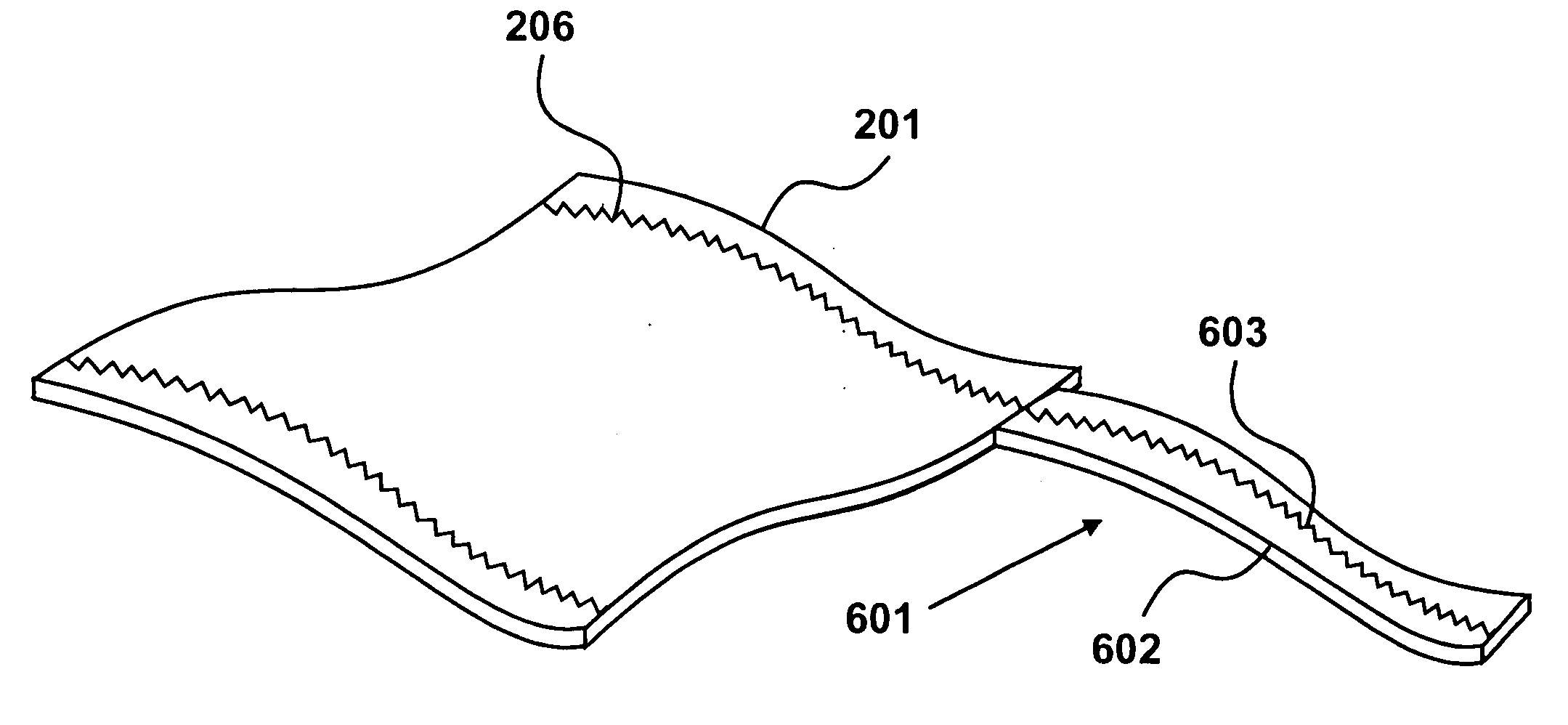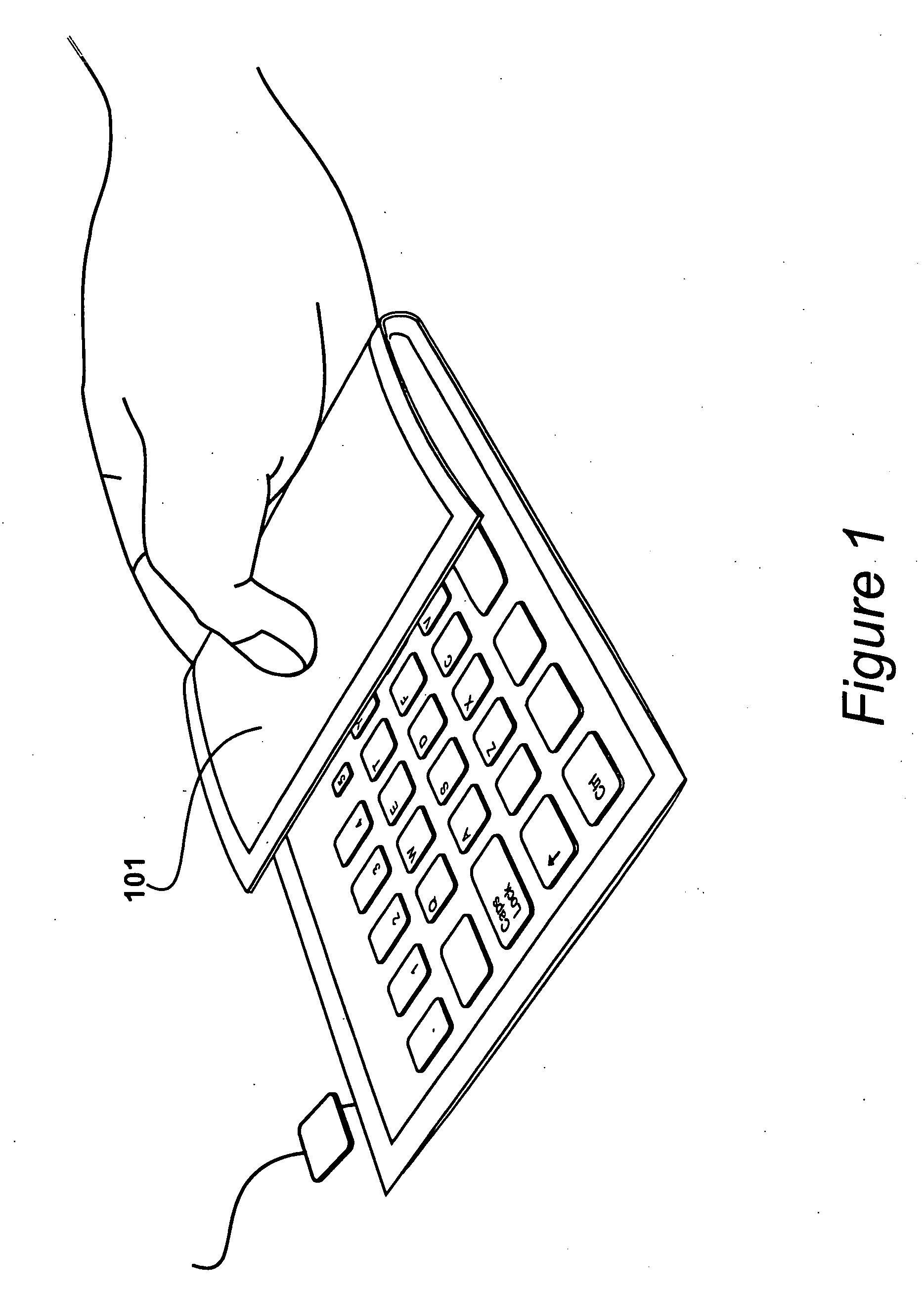Electrical conductor element
a technology of electrical conductors and elements, applied in the direction of electrical equipment, coatings, applications, etc., can solve the problems of metalised strips and the adhesive connection to the conductive fabric layer to wear, and reduce the accuracy of the position determination of mechanical interactions
- Summary
- Abstract
- Description
- Claims
- Application Information
AI Technical Summary
Benefits of technology
Problems solved by technology
Method used
Image
Examples
Embodiment Construction
FIG. 1
[0017] A flexible position sensor is shown in FIG. 1. Portable sensor 101 is a peripheral data input device, in the form of an alphanumeric keyboard, for a mobile telephone or other electronic processing device. The portable sensor 101 is flexible to allow it to be folded for convenient transportation and storage. The sensor 101 is therefore required to withstand repeated bending and folding operations to provide a working life of satisfactory length.
FIG. 2
[0018] Flexible layers of sensor 101 are shown in FIG. 2. The sensor 101 utilises a first conductive fabric layer 201, a second conductive fabric layer 202 and an intermediate separating layer 203 disposed between the first conductive fabric layer 201 and the second conductive fabric layer 202. The intermediate separating layer 203 is configured to separate the first conductive fabric layer 201 and the second conductive fabric layer 202 in the absence of a mechanical interaction with the position sensor 101. The intermediat...
PUM
| Property | Measurement | Unit |
|---|---|---|
| Length | aaaaa | aaaaa |
| Pressure | aaaaa | aaaaa |
| Electrical conductivity | aaaaa | aaaaa |
Abstract
Description
Claims
Application Information
 Login to View More
Login to View More - R&D
- Intellectual Property
- Life Sciences
- Materials
- Tech Scout
- Unparalleled Data Quality
- Higher Quality Content
- 60% Fewer Hallucinations
Browse by: Latest US Patents, China's latest patents, Technical Efficacy Thesaurus, Application Domain, Technology Topic, Popular Technical Reports.
© 2025 PatSnap. All rights reserved.Legal|Privacy policy|Modern Slavery Act Transparency Statement|Sitemap|About US| Contact US: help@patsnap.com



